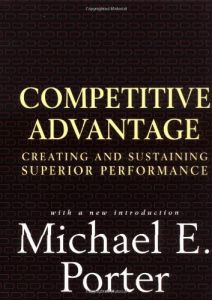
Competitive Advantage
Creating and Sustaining Superior Performance
First Edition: 1985 more...
ISBN: 9780684841465
Pages: 592
Recommendation
This classic work on competition is indicative of the importance of Michael Porter’s pivotal contributions to management literature. The book seems as fresh and relevant today as when it was first published more than a quarter-century ago. Porter, a professor at the Harvard Business School, is the author of 16 books, and a leading authority on competitive strategy and economic development. His ideas have guided economic policy worldwide, which may account for his nine honorary degrees and numerous awards. This book demonstrates the reasons for his influence. He provides a clear, deftly written, very accessible guide to developing and implementing competitive strategy. He covers the fundamentals of value chains, costs, differentiation, technology, substitution, synergies and more. getAbstract assumes that they told you in business school to reread this frequently as a management touchstone.
Summary
About the Author
Michael E. Porter is the Bishop William Lawrence University Professor in the Institute for Strategy and Competitiveness at the Harvard Business School, and an international authority on strategy and economic development. He has published 16 books and more than 100 articles.











Comment on this summary